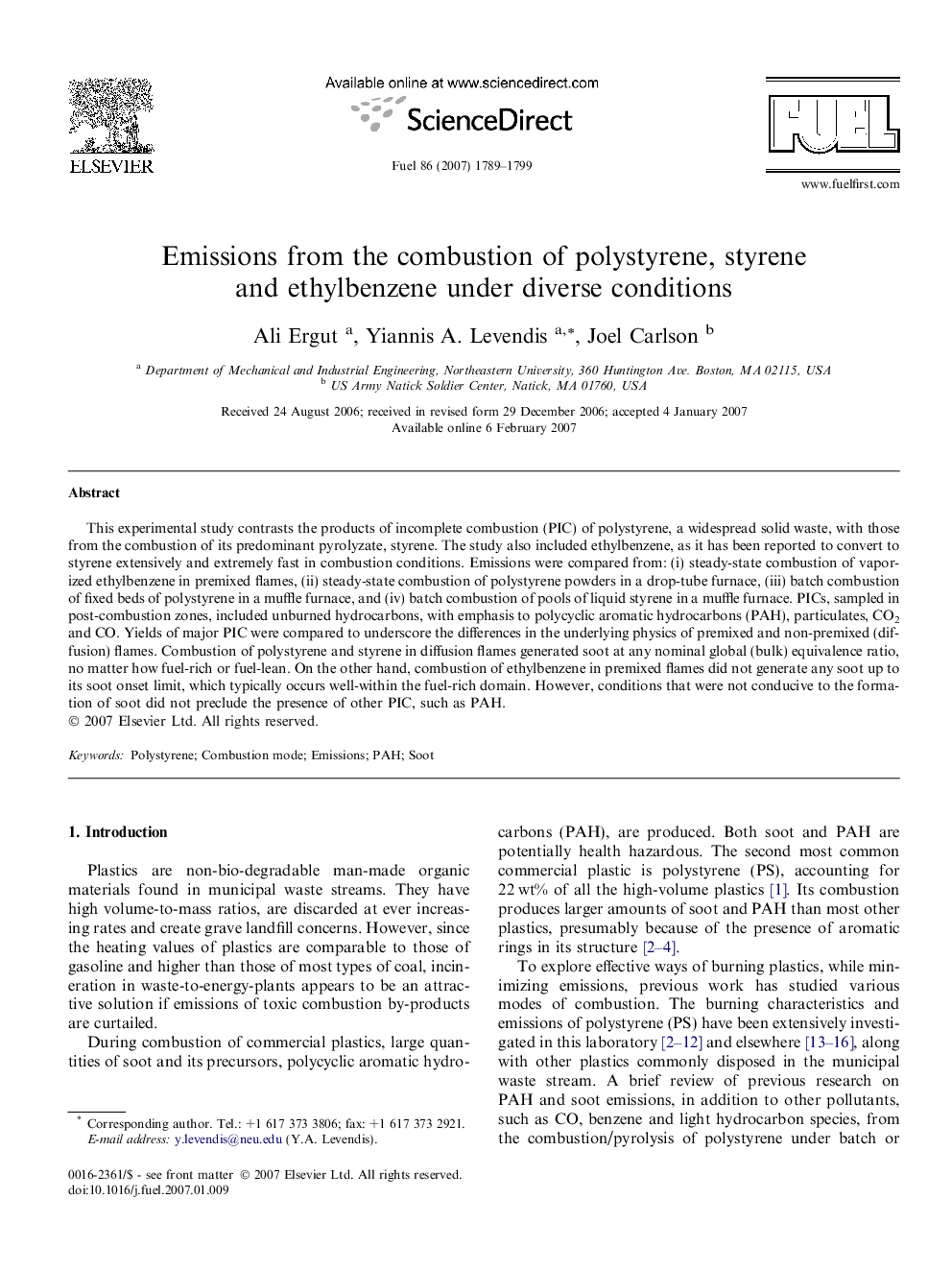| کد مقاله | کد نشریه | سال انتشار | مقاله انگلیسی | نسخه تمام متن |
|---|---|---|---|---|
| 207611 | 461221 | 2007 | 11 صفحه PDF | دانلود رایگان |

This experimental study contrasts the products of incomplete combustion (PIC) of polystyrene, a widespread solid waste, with those from the combustion of its predominant pyrolyzate, styrene. The study also included ethylbenzene, as it has been reported to convert to styrene extensively and extremely fast in combustion conditions. Emissions were compared from: (i) steady-state combustion of vaporized ethylbenzene in premixed flames, (ii) steady-state combustion of polystyrene powders in a drop-tube furnace, (iii) batch combustion of fixed beds of polystyrene in a muffle furnace, and (iv) batch combustion of pools of liquid styrene in a muffle furnace. PICs, sampled in post-combustion zones, included unburned hydrocarbons, with emphasis to polycyclic aromatic hydrocarbons (PAH), particulates, CO2 and CO. Yields of major PIC were compared to underscore the differences in the underlying physics of premixed and non-premixed (diffusion) flames. Combustion of polystyrene and styrene in diffusion flames generated soot at any nominal global (bulk) equivalence ratio, no matter how fuel-rich or fuel-lean. On the other hand, combustion of ethylbenzene in premixed flames did not generate any soot up to its soot onset limit, which typically occurs well-within the fuel-rich domain. However, conditions that were not conducive to the formation of soot did not preclude the presence of other PIC, such as PAH.
Journal: Fuel - Volume 86, Issues 12–13, August 2007, Pages 1789–1799